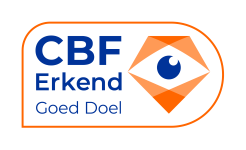The LICM project implemented by MCNV in Lao PDR is part of a larger program on inclusion called VOICE; for more information reference can be made to www.voiceglobal.org
LICM introduces communicative communication methods such as (shadow) drama, songs and cartoons as a means to facilitate dialogue between youngsters of vulnerable groups about SRHR and between youngsters and influential people and groups in society.
The beginning of June was off to a good start thanks to the great work done in a co-creative workshops in Savannakhet. The workshop was organised by the Lao Disabled People’s Association (LPDA) in cooperation with MCNV. Seven different villages, twenty-two participants, three wonderfully put together stories. The twenty-two participants consisted of seventeen disabled youths and five adolescent girls, all between the age of fourteen and twenty-four. By sex, 12 males and twelve females participated.

The goal of the workshop was to start a dialogue on sexuality of disabled youth and adolescent girls between themselves and within the community. In a former visit in May the main issues the youth wanted to talk about had been selected already and these were:
- Discrimination that affects the marriage life of the young disabled;
- Young girls having SRH problems as a consequence of lacking knowledge and skills about SRHR
Three stories were developed by three groups. At the start of the workshop, the groups were a bit timid, but as time progressed they shed their shyness and openly engaged in conversation. The three groups were each assigned one communication product: dialogue drama, shadow drama and participatory video.
The story developed by a group of disabled youth, is about a disabled boy falling in love with a non-disabled girl. After a period of time, he decides to propose to her. She is delighted with the proposal. They decide to ask for the permission from the girl’s parents. Although the parents like the boy, they still refuse him for fear that as a father with disability, his children in future would be disabled, too. The boy and the girl are very sad. Then their friends appear and suggested them to ask a doctor to counsel the parents. The doctor comes to meet the parents and explains to them that the disability is not hereditary. After the consultation with the doctor, the parents allow the couple to get married. The story ends with a happy ending: A wedding is celebrated!
This story was told through shadow drama at: //drive.google.com/drive/folders/0B4Isr8JKRCreUnhBVldpODhIY00
Key message from the story: The lack of knowledge about and the discrimination of disabled young people makes it difficult for them to participate in the daily life of the community. Be open, look at their abilities and support their love relationships. Counselling of people with disabilities, their families and communities about SRHR should improve.
A communication event was organised in Phonsim, a village located 18km away from Kayson, and approximately forty villagers of all ages came to see the film of the shadow drama.

After the drama was shown, a program officer of the Lao Disabled People’s Association in Savannakhet raised questions around the story and asked people to share their opinions about specific aspects. The audience was joyful and participated in the interaction. The participants in the event agreed that counselling of youth in general and of the disabled youth in particular should improve.
A short evaluation of the co-creation workshop and the communication event resulted in the following feedback of the co-creative workshop participants:
- Shadow drama was best liked by the participants.
- The youngsters were especially impressed at the communication event. It was the first time they enjoyed practicing drama in front of an audience. Quite a lot of them felt nervous at the start but enjoyed it later.
‘We didn’t do well at the workshop, but strangely when we were here in front of the audience, we did it much better. For example, one of us burst out crying with tears. She couldn’t do it in the class.’
‘We feel very happy to see that people enjoyed watching us perform and after that answering the questions’.
‘We have shown that the disabled can also do this work as the non-disabled’
LICM has shared this shadow drama and also the video at the end of June with a larger group of stakeholders, i.e. the Women’s Union, Youth’s Union, Labour and Social Welfare Department, Health Department and College of Health Sciences in order to lobby for improving knowledge sharing and counselling on SRHR.



